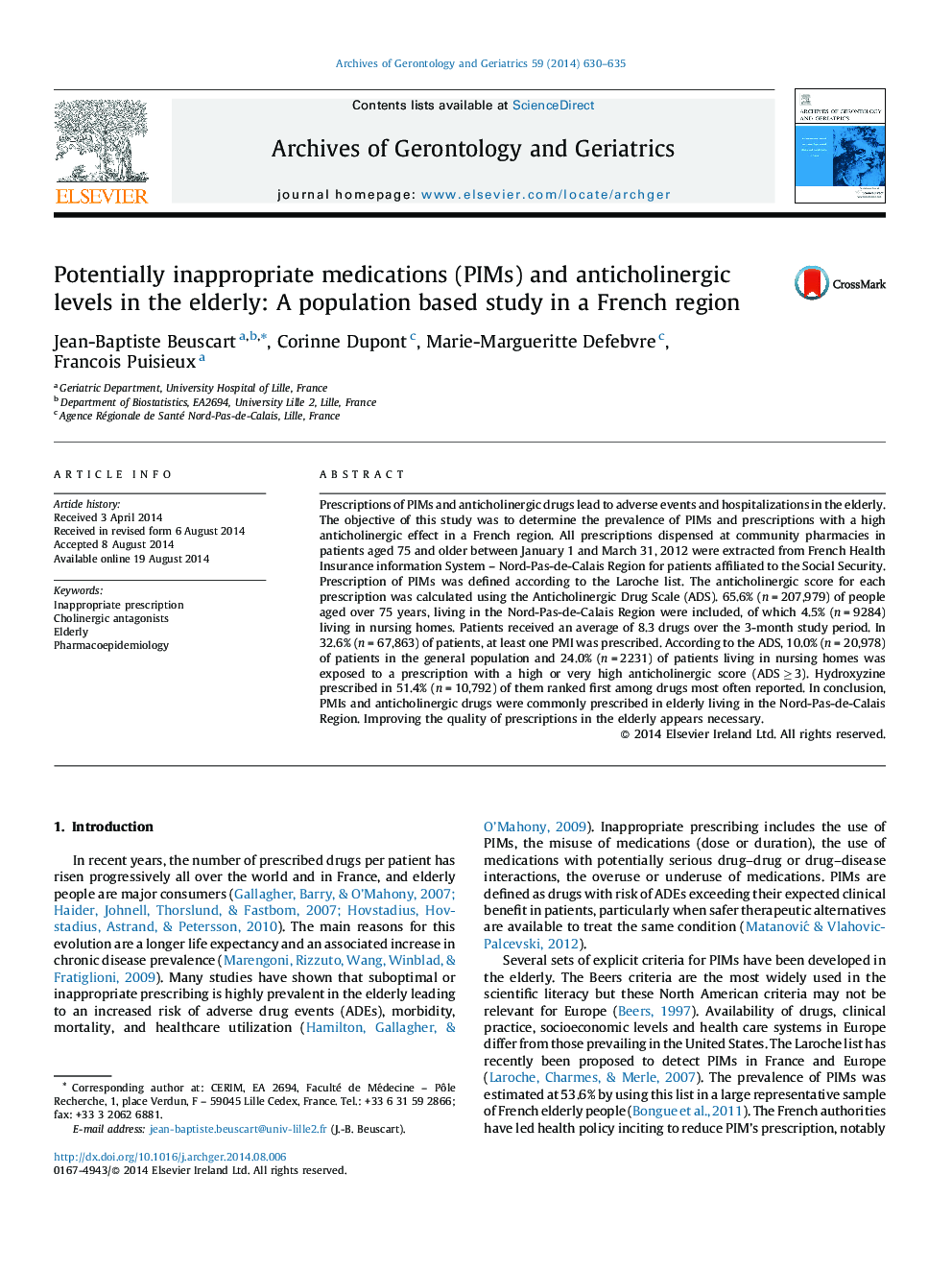| Article ID | Journal | Published Year | Pages | File Type |
|---|---|---|---|---|
| 1902911 | Archives of Gerontology and Geriatrics | 2014 | 6 Pages |
•Prescriptions of 207,979 elderly people aged 75 years and older were analyzed.•PIMs were found in 32.6% of patients.•10% of patients were exposed to a prescription with a high anticholinergic score.•24% of nursing homes patients were exposed to a prescription with a high anticholinergic score.
Prescriptions of PIMs and anticholinergic drugs lead to adverse events and hospitalizations in the elderly. The objective of this study was to determine the prevalence of PIMs and prescriptions with a high anticholinergic effect in a French region. All prescriptions dispensed at community pharmacies in patients aged 75 and older between January 1 and March 31, 2012 were extracted from French Health Insurance information System – Nord-Pas-de-Calais Region for patients affiliated to the Social Security. Prescription of PIMs was defined according to the Laroche list. The anticholinergic score for each prescription was calculated using the Anticholinergic Drug Scale (ADS). 65.6% (n = 207,979) of people aged over 75 years, living in the Nord-Pas-de-Calais Region were included, of which 4.5% (n = 9284) living in nursing homes. Patients received an average of 8.3 drugs over the 3-month study period. In 32.6% (n = 67,863) of patients, at least one PMI was prescribed. According to the ADS, 10.0% (n = 20,978) of patients in the general population and 24.0% (n = 2231) of patients living in nursing homes was exposed to a prescription with a high or very high anticholinergic score (ADS ≥ 3). Hydroxyzine prescribed in 51.4% (n = 10,792) of them ranked first among drugs most often reported. In conclusion, PMIs and anticholinergic drugs were commonly prescribed in elderly living in the Nord-Pas-de-Calais Region. Improving the quality of prescriptions in the elderly appears necessary.
